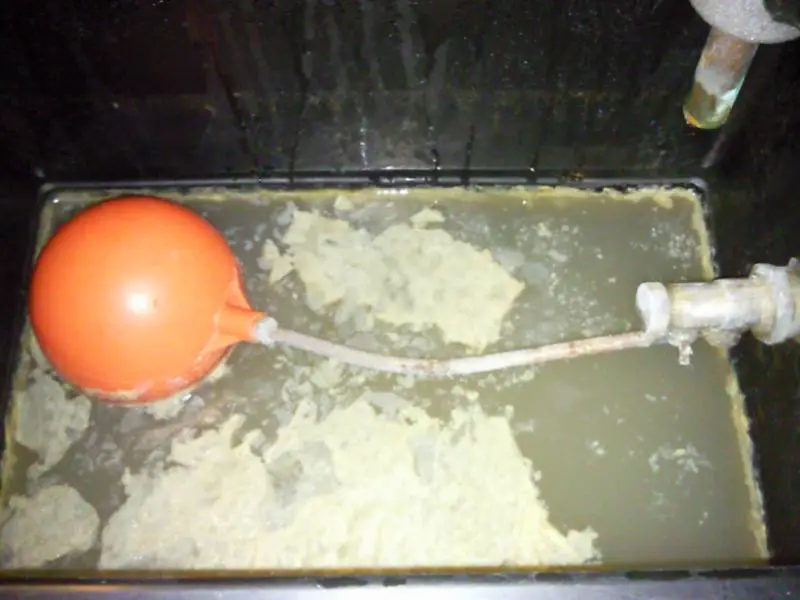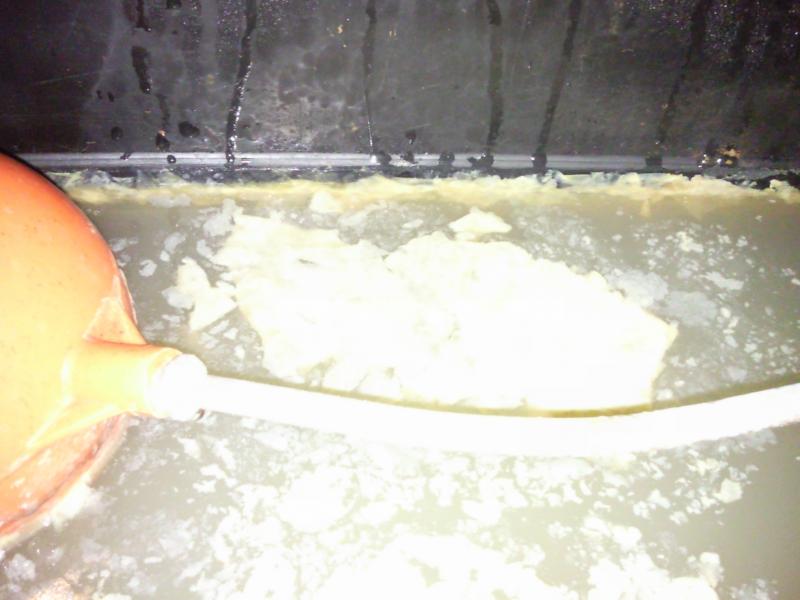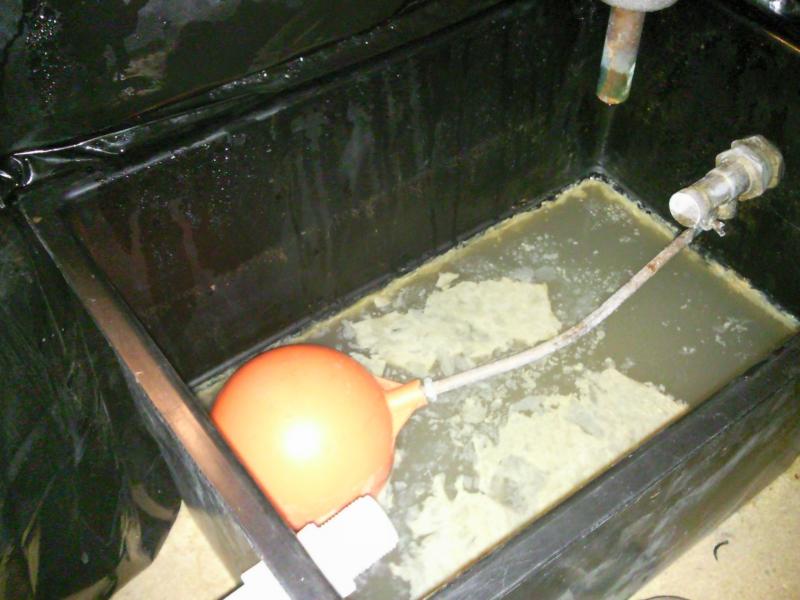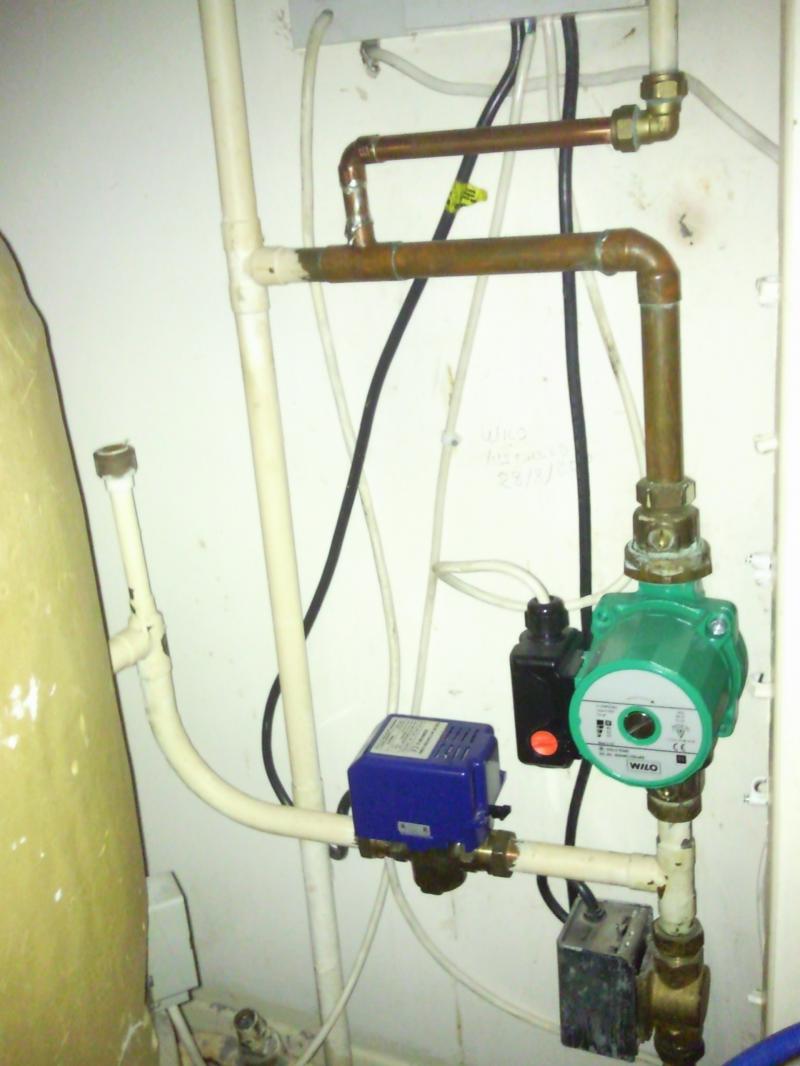Ok, the title sums it up really, but here is some background 
Pumped Primary, open-vented system. Indirectly heated DHW.
Last year my heating system had issues with various rads not getting warm etc. When I tried to clean the system the water that came out was black, so I ran some X400 through it for about 1 month and flushed out all the black water until it ran clear.
I then refilled the system with some X100 and all seemed well... for a while...
Due to adding a towel radiator in the bathroom I then had to drain the system again early this year.
When draining, the water seemed murky again and when fitting the towel rail I found that some of the 22mm pipework was quite encrusted on the inside with black deposits (iron oxide I guess). The worst pipe was replaced, and when I refilled I also added X800 (as I believe that is a more agressive cleaner). The circulation pump was set on it's highest setting and the system run with all valves open ensuring good flow round the whole system.
After some period of time I again drained the entire system, flushed the whole thing until the water was clear, then refilled the system adding X100, and ALSO X200.
I have not used X200 before, but as I live in a hardwater area I was advised that it would help to stop calcium build up in the boiler.
This was around 16th February.
-----------------
Over the last 2 weeks or so the system has seemed to get an increasing amount of air circulating in it. I have tried bleeding the radiators and there doesn't seem to be any air in them, but when either the DHW is being heated, or the CH is running I can hear the air pockets circulating and thrashing through the pump in the airing cupboard, and I can hear it gurgle through the boiler downstairs as well.
This evening I had a bit of time to take a look at it, so tried the 'jam-jar over the vent pipe' in the loft, whilst my wife switched the pump on and off, and sure enough the water level in the jar dropped and raised (+ bubbles) in synch with the pump being switched on and off so that seems to be ok.
However when I removed the cover from the F/E tank this is what I was faced with:
Bearing in mind that I scrubbed this tank clean before I refilled last time (about 6 weeks ago!), any ideas on what on earth this manky white gunk is, and where it has come from?
Recommended course of action? Presumably I'm going to need to bail all that out and flush the system through again?
Could this be caused by the X200? It is the only thing that I've added differently to usual?
Could it be this gunk, (or rather whatever reaction is creating it), that is causing the air build up in the system?
Thanks for any info / guidance!
Pumped Primary, open-vented system. Indirectly heated DHW.
Last year my heating system had issues with various rads not getting warm etc. When I tried to clean the system the water that came out was black, so I ran some X400 through it for about 1 month and flushed out all the black water until it ran clear.
I then refilled the system with some X100 and all seemed well... for a while...
Due to adding a towel radiator in the bathroom I then had to drain the system again early this year.
When draining, the water seemed murky again and when fitting the towel rail I found that some of the 22mm pipework was quite encrusted on the inside with black deposits (iron oxide I guess). The worst pipe was replaced, and when I refilled I also added X800 (as I believe that is a more agressive cleaner). The circulation pump was set on it's highest setting and the system run with all valves open ensuring good flow round the whole system.
After some period of time I again drained the entire system, flushed the whole thing until the water was clear, then refilled the system adding X100, and ALSO X200.
I have not used X200 before, but as I live in a hardwater area I was advised that it would help to stop calcium build up in the boiler.
This was around 16th February.
-----------------
Over the last 2 weeks or so the system has seemed to get an increasing amount of air circulating in it. I have tried bleeding the radiators and there doesn't seem to be any air in them, but when either the DHW is being heated, or the CH is running I can hear the air pockets circulating and thrashing through the pump in the airing cupboard, and I can hear it gurgle through the boiler downstairs as well.
This evening I had a bit of time to take a look at it, so tried the 'jam-jar over the vent pipe' in the loft, whilst my wife switched the pump on and off, and sure enough the water level in the jar dropped and raised (+ bubbles) in synch with the pump being switched on and off so that seems to be ok.
However when I removed the cover from the F/E tank this is what I was faced with:
Bearing in mind that I scrubbed this tank clean before I refilled last time (about 6 weeks ago!), any ideas on what on earth this manky white gunk is, and where it has come from?
Recommended course of action? Presumably I'm going to need to bail all that out and flush the system through again?
Could this be caused by the X200? It is the only thing that I've added differently to usual?
Could it be this gunk, (or rather whatever reaction is creating it), that is causing the air build up in the system?
Thanks for any info / guidance!






